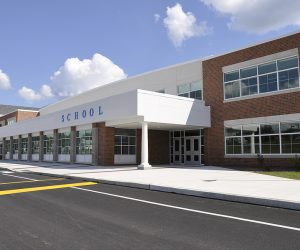
Sorry, your browser is not compatible with this application. Please use the latest version of Google Chrome, Mozilla Firefox, Microsoft Edge or Safari.
Reimagining School Places and Spaces
Most of us spend 90 percent of our daily lives within a built environment. We have also learned that the built and cultural environments essential to our educational mission propagate the spread of COVID-19 through viral exchange and transfer via airborne respiratory droplets.
School occupant density is influenced by the spatial configuration of school building spaces and programs, occupancy schedules; the flow of students in shared hallways, dining, gym, other commons spaces; and indoor and outdoor activities including transportation. We know occupant density facilitates concentration of the COVID-19 virus, when the virus is present.
To support a safer return to face-to-face K-12 education, ESD 112’s Construction Services Group (CSG) has identified the following current and emergent best practices for the reader’s review and information. The following information is expressly intended to complement the efforts of OSPI’s committees and enhance the content of OSPI guidance published on June 11: Reopening Washington Schools 2020: District Planning Guide.

| Format: |
|
| Topics: | |
| Website: | Visit Publisher Website |
| Publisher: | Construction Services Group |
| Published: | June 15, 2020 |
| License: | Copyrighted |
| Copyright: | © 2020 Construction Services Group | A Program of Educational Service District 112. All rights reserved. |
Featured Content

Contact Publisher


Claim Content





